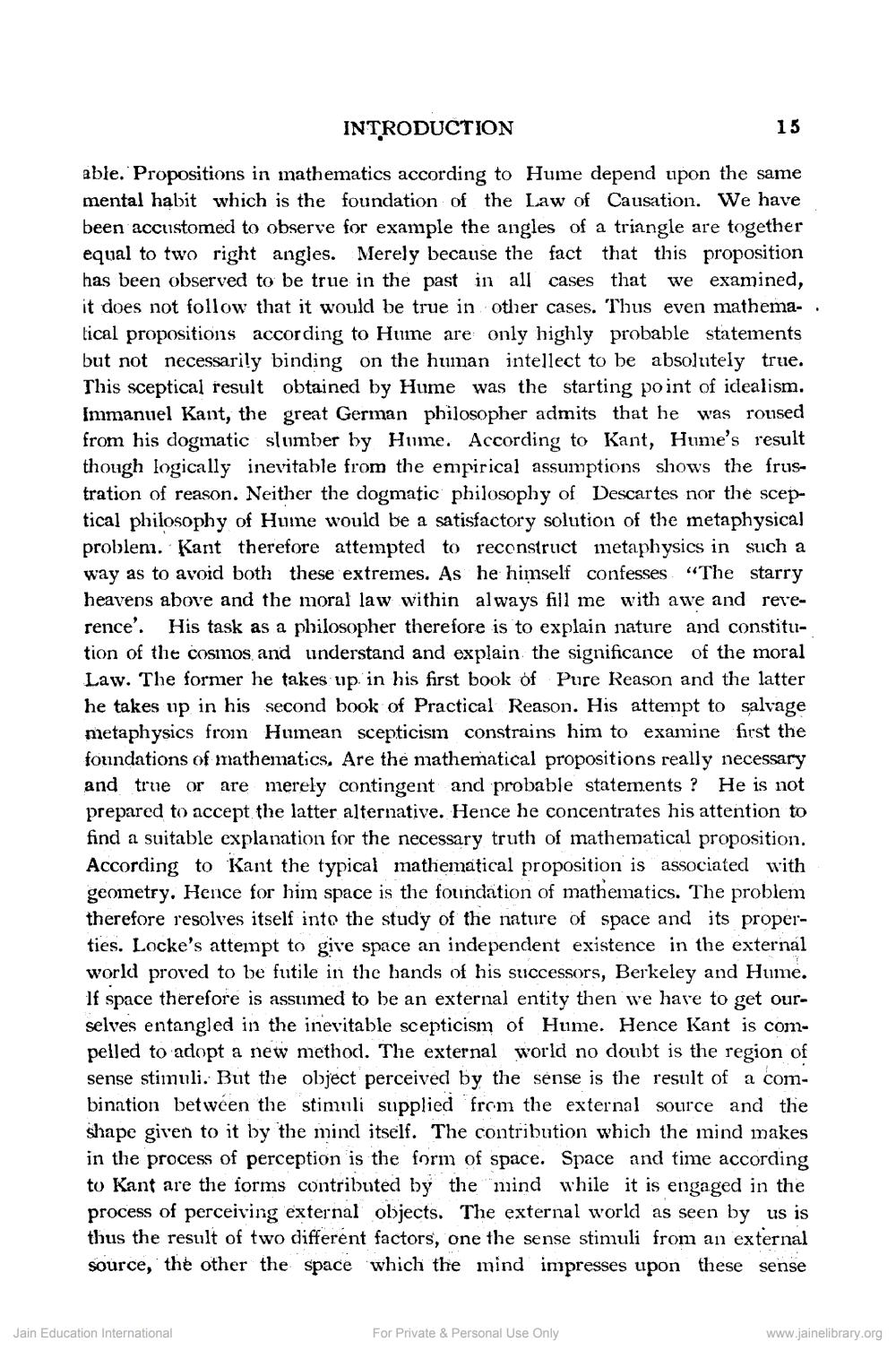________________
INTRODUCTION
15
able. Propositions in mathematics according to Hume depend upon the same mental habit which is the foundation of the Law of Causation. We have been accustomed to observe for example the angles of a triangle are together equal to two right angles. Merely because the fact that this proposition has been observed to be true in the past in all cases that we examined, it does not follow that it would be true in other cases. Thus even mathema- . tical propositions according to Huine are only highly probable statements but not necessarily binding on the human intellect to be absolutely true. This sceptical result obtained by Hume was the starting point of idealism. Immanuel Kant, the great German philosopher admits that he was roused from his dogmatic slumber by Hume. According to Kant, Hume's result though logically inevitable from the empirical assumptions shows the frustration of reason. Neither the dogmatic philosophy of Descartes nor the sceptical philosophy of Hume would be a satisfactory solution of the metaphysical problem. Kant therefore attempted to reconstruct metaphysics in such a way as to avoid both these extremes. As he himself confesses “The starry heavens above and the moral law within always fill me with awe and reverence'. His task as a philosopher therefore is to explain nature and constitution of the cosmos, and understand and explain the significance of the moral Law. The former he takes up in his first book of Pure Reason and the latter he takes up in his second book of Practical Reason. His attempt to salvage metaphysics from Humean scepticism constrains him to examine first the foundations of mathematics. Are the mathematical propositions really necessary and true or are merely contingent and probable statements ? He is not prepared to accept the latter alternative. Hence he concentrates his attention to find a suitable explanation for the necessary truth of mathematical proposition. According to Kant the typical mathematical proposition is associated with geometry. Hence for him space is the foundation of mathematics. The problem therefore resolves itself into the study of the nature of space and its properties. Locke's attempt to give space an independent existence in the external world proved to be futile in the hands of his successors, Berkeley and If space therefore is assumed to be an external entity then we have to get ourselves entangled in the inevitable scepticism of Hume. Hence Kant is compelled to adopt a new method. The external world no doubt is the region of sense stimuli. But the object perceived by the sense is the result of a combination between the stimuli supplied from the external source and the shape given to it by the mind itself. The contribution which the mind makes in the process of perception is the form of space. Space and time according tu Kant are the forms contributed by the mind while it is engaged in the process of perceiving external objects. The external world as seen by us is thus the result of two different factors, one the sense stimuli from an external source, the other the space which the mind impresses upon these sense
Jain Education International
For Private & Personal Use Only
www.jainelibrary.org




